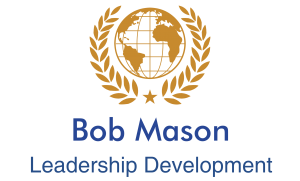I once was leading an organization that was unfamiliar with the strategic planning process. Since this organization was brand new, there were a great number of things that needed to be done. I did not feel it was appropriate to immediately start the process; for one thing my entire leadership team was not yet in place. I wanted to get everyone thinking though, so I created my own personal strategic plan, complete with mission, values, and goals. I posted the plan on the wall in my office and made it a point to reference it and clearly strive to accomplish my goals. When we did start the organization’s strategic planning process, everyone already knew what I was thinking and, more importantly, that I was serious about planning.
Leaders should always create their own personal strategic plan before attempting to produce one for the organization. When you gather your leadership team and start the process, you need to have a good idea of what you feel is important. That doesn’t mean you write the organization’s plan before you start the planning sessions. It means you have considered your own plan and know where you want to lead. This is especially critical for three elements.
First, the vision and mission statements. The vision statement belongs to the senior leader and it is vital that he or she know and be able to articulate that vision. Likewise, the leader should have a pretty good idea of the organization’s mission. I know this sounds obvious, but I’m constantly amazed by the number of leaders who have never really considered all aspects of the mission. Though the best mission statements come from a team approach, senior leaders need to have considered their high-level view of the mission first.
Second, the senior leader absolutely must evaluate his or her values before meeting with the team. I cannot overemphasize the importance of personal values. It’s vital in any organization to not only state values, but to live by them. As the senior leader, your ability to clearly and succinctly state your values, and obviously adhere to them yourself, will provide a great starting point for the team’s efforts.
Third, you should have a defined set of personal goals. These may or may not be goals for the whole organization, but you must know where you are going personally. You can keep these to yourself or not, as you see fit. By defining your personal goals, you will be more prepared to consider the organization’s goals.
I’ve been primarily addressing the organization’s senior leader here, but a personal strategic plan is important at all leadership levels. Every leader should individually complete the process. In fact, when I conduct or facilitate strategic planning sessions, I always task team members to come to each meeting with their own ideas for each part of the plan.
One very important point to keep in mind. Just as your organization’s plan is a living document, subject to modification as situations change, you must be flexible in your own plan. The organization’s plan will be created by a leadership team. This team approach ensures a more comprehensive plan as all aspects of the organization are represented. The team is vital in creating a truly masterful plan; the whole is greater than the sum of its parts. After the leadership team has completed the organization’s strategic plan, you will probably find your own plan needs to be modified. That’s fine; you must be willing to change your plan. I’ve never had a planning session in which someone doesn’t have an “Ah Ha” moment when they hear someone else’s idea and wish they had thought of it. Everyone comes away with a better understanding of themselves, as well as the organization.
An individual strategic plan will not only set the stage for your own success, but will also significantly enhance your leadership of, or contributions to, the organization’s leadership team. Not only will you gain in your own self-improvement, but you’ll also be more likely to produce a winning plan for the entire organization.
 Bob Mason is dedicated to leadership development. He works with companies to solve problems by helping supervisors and managers become more effective leaders leading more productive teams. He is a professional speaker and author of Don’t Worry, You Can Do This: What New Supervisors and Managers Need to Know About Leadership; The Art of Not Motivating: How Leaders Can Succeed by Understanding the True Nature of Motivation; Balancing the Generations: A Leader’s Guide to the Complex, Multi-Generational, 21st Century Workplace; and Planning to Excel: Strategic Planning That Works.
Bob Mason is dedicated to leadership development. He works with companies to solve problems by helping supervisors and managers become more effective leaders leading more productive teams. He is a professional speaker and author of Don’t Worry, You Can Do This: What New Supervisors and Managers Need to Know About Leadership; The Art of Not Motivating: How Leaders Can Succeed by Understanding the True Nature of Motivation; Balancing the Generations: A Leader’s Guide to the Complex, Multi-Generational, 21st Century Workplace; and Planning to Excel: Strategic Planning That Works.
A 30-year career in the U.S. Air Force exposed him to great leaders and leadership opportunities such as command of four squadrons, including the Air Force’s largest munitions squadron. He has studied leadership extensively, but more importantly has been there, working with real people, making hard decisions, and experiencing the results.
Contact Bob at Bob@BobMasonSpeaker.com or 505-453-5266




